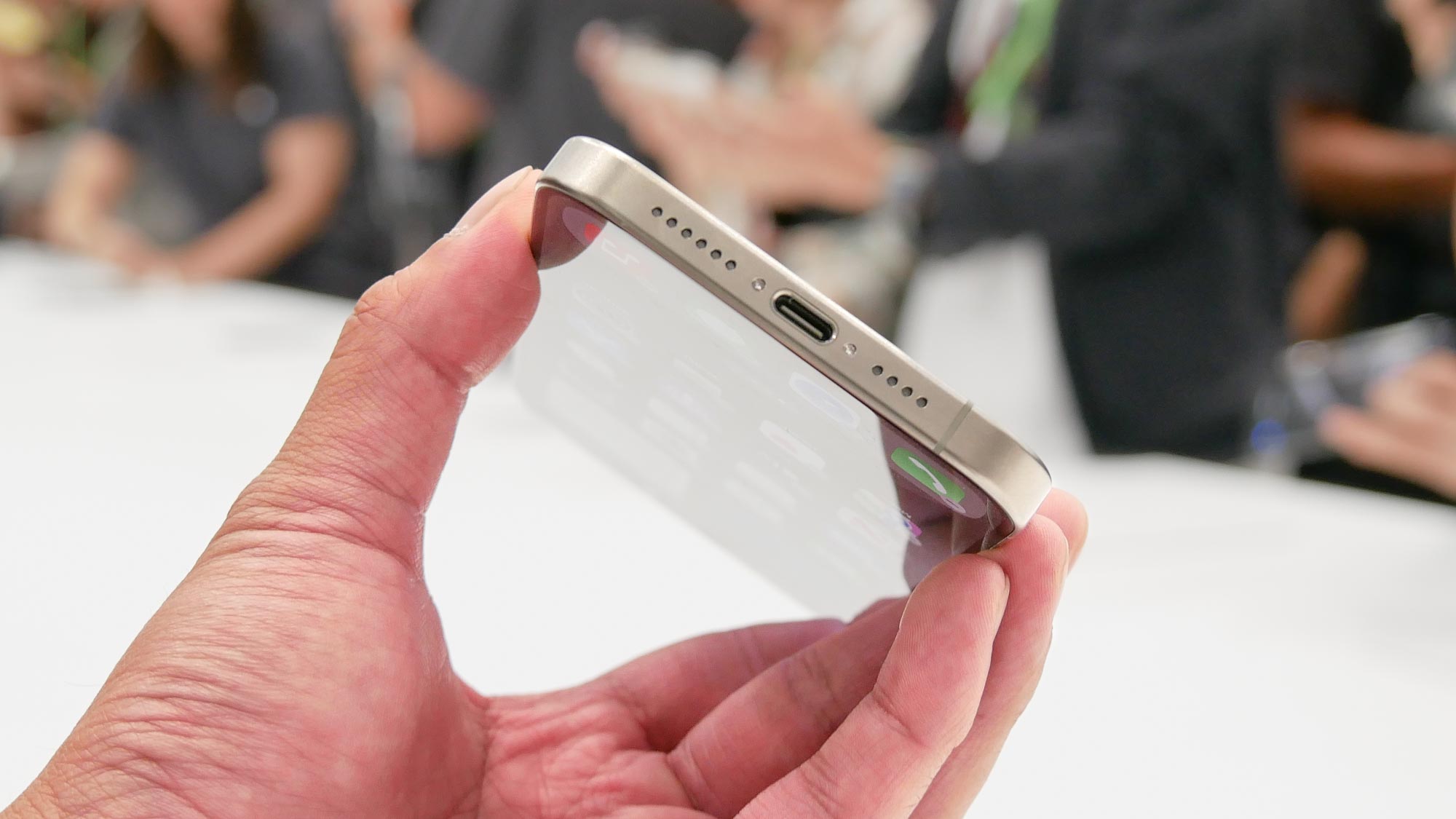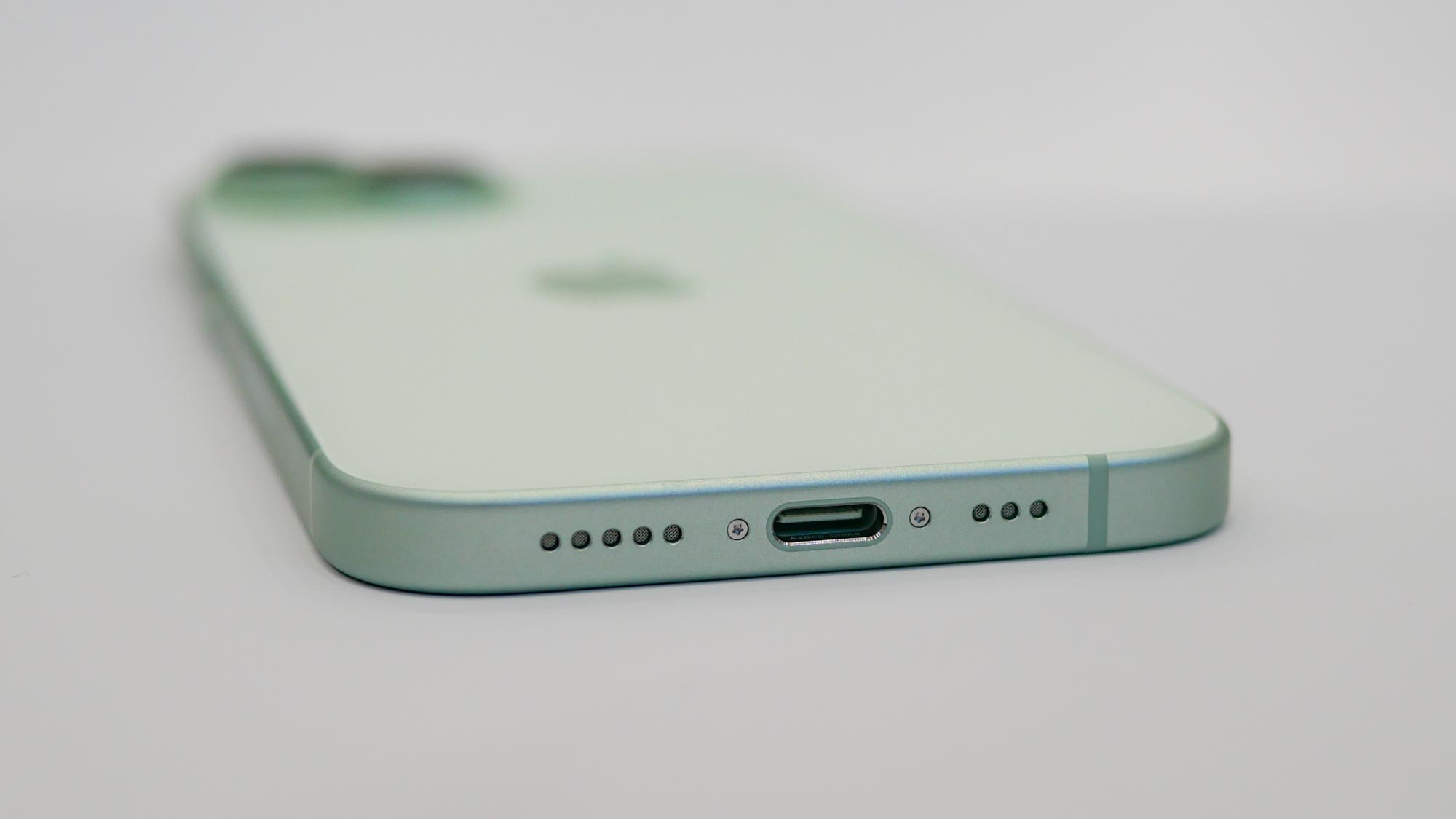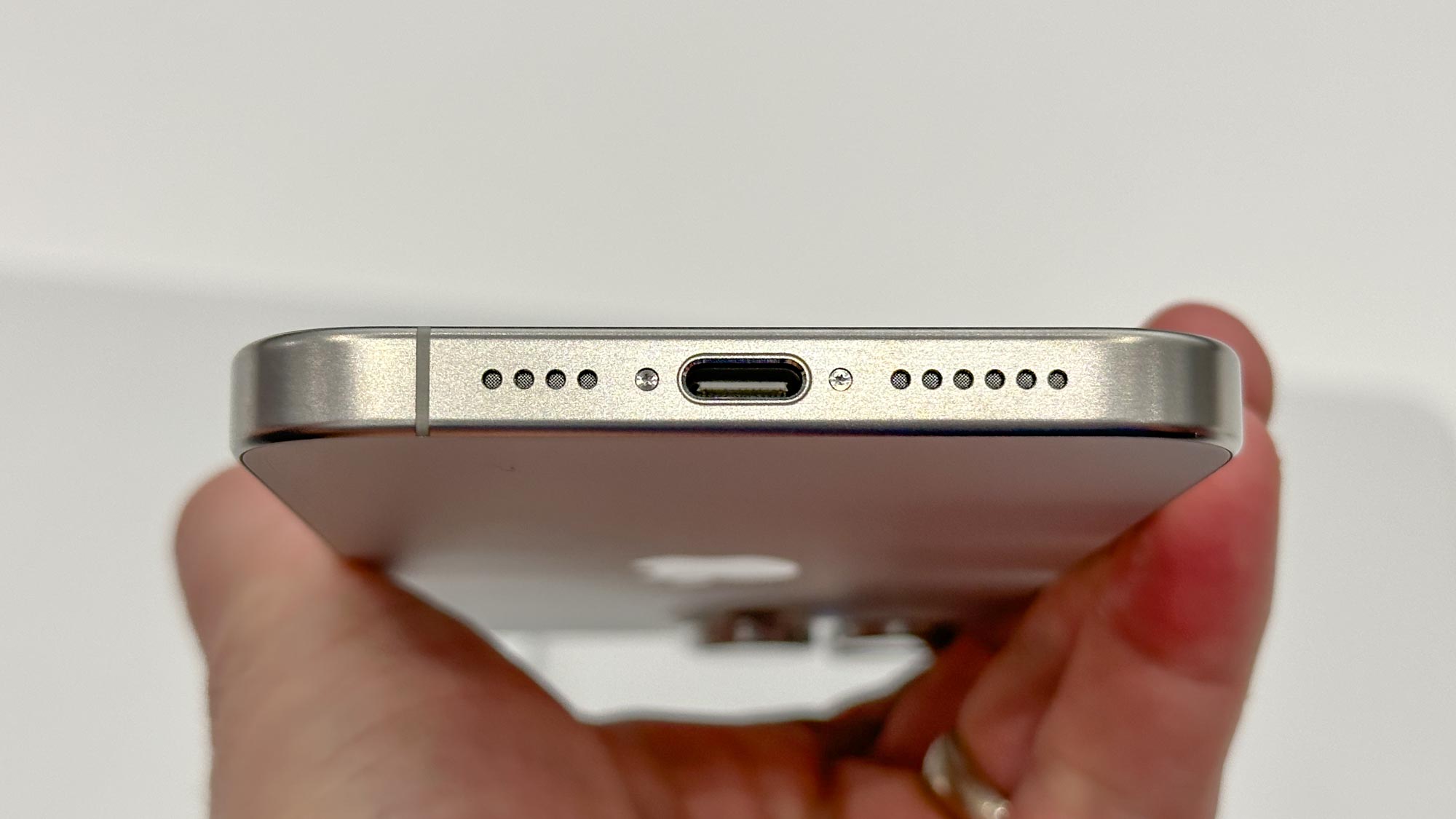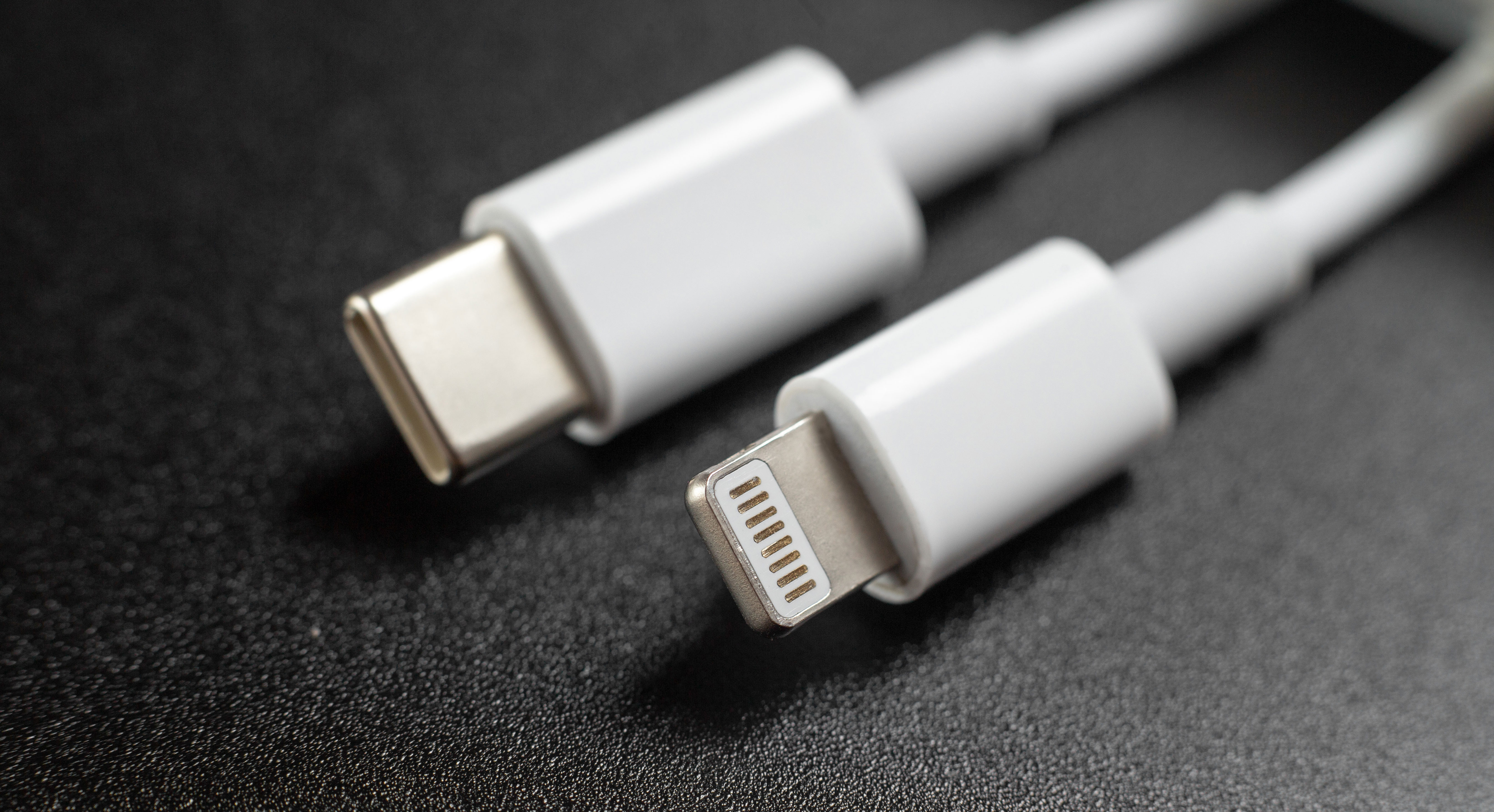iPhone 15 USB-C is a big disappointment — here’s why
This feels deliberate

This week saw the launch of the iPhone 15 series, which just so happens to be the very first iPhone to use USB-C. That’s right, after more than 15 years of using proprietary connections, the iPhone is finally using the same charging port as every other premium gadget on the planet — including Apple's iPads and MacBooks.
It’s no big surprise that the iPhone 15 adopted USB-C instead of Lightning. Not only have we been hearing rumors about it for the past few months, Apple didn’t really have much choice in the matter. New EU legislation mandates the use of USB-C in smartphones from the end of 2024, and the choice was to fall in line or stop selling phones in the region. Other governments quickly followed, including India, Saudi Arabia and Apple’s home state of California.
It was speculated that Apple would try and turn this situation on its head, and act like switching iPhone 15 to USB-C was actually the plan all along. But, in my eyes at least, given the way Apple has implemented USB-C in the iPhone 15 lineup, it couldn’t be more obvious that the company has been forced into this situation against its will.
In fact the USB-C we’re about to get in the iPhone 15 looks so poor, and almost anti-Apple that the company came across more like a moody teenager — doing the absolute bare minimum in the hopes that everyone will get off its back.
iPhone 15’s USB-C isn’t an improvement over Lightning

The thing you need to remember about USB-C is that it is just the interface. Behind that port could be any number of iterations of USB technology dating back almost 24 years. Even the Lightning cable, Apple’s now-defunct proprietary connection, had some underlying USB technology — specifically USB 2.0
The iPhone 15 may have swapped Lightning for USB-C, but that underlying technology hasn’t really changed. Charging speed hasn’t improved, as best as we can tell, and the data transfer speed on the iPhone 15 and iPhone 15 Plus remains stuck at the same 480 Mbps as USB 2.0. The changes are, essentially skin deep, and means the only real advantage to this change is the fact you can use the same charging cable for all your devices.
USB 2.0 dates back to April 2000, a time when I was still in elementary school and hadn’t even aged into double digits yet. Considering how quickly technology can become obsolete, especially in the 21st Century, it’s really rather bizarre that the ultra-premium iPhones were relegated to a connection type that launched into a world that only had four Star Wars movies.
But it gets worse. USB 2.0’s 480 Mbps data transfer speed is very slow. In case you don’t understand just how slow it is, you should know how much the USB standard has changed over the past quarter century. The most recent release was that of USB 4 version 2, which happened last November.
This latest version of the standard offers transfer speeds up to 120 Gbps — or 120,000 Mbps. That’s 250x faster than USB 2’s theoretical maximum. The newly announced Thunderbolt 5 offers the same transfer speed, among other things, and it makes Apple’s USB 2.0-laden switchover seem even less appealing.
Apple is not one to jump on bandwagons and adopt new technologies for the sake of it, but it seems very unlike the company to deliberately offer something so poor. At least with Lighting the excuse was that the connector was limited to its original technology, and in the process of aging out. But USB-C doesn’t have that same problem.
iPhone 15 Pro is also relying on aging USB technology

The iPhone 15 Pro fairs a little better than the standard iPhone 15 where USB-C is concerned, but that doesn’t mean Apple has done the phone any favors. In fact the phone relies on decade-old technology, which Apple is referring to as USB 3.0 in all its marketing material.
Technically speaking the port sounds more like USB 3.1, since the iPhone 15 Pro has 10 Gbps data transfer speeds — and USB 3.0 is limited to 5Gbps. But I digress —whichever way you look at it Apple has still added a USB-C port using tech from 2013 at the very latest.
This isn’t quite as bad as sticking with USB 2.0. There’s a difference of 13 years between those two standards after all, and a lot of Apple’s rivals only switched to USB 3.2 in their most recent generation. But it still feels like Apple still dropped the ball somewhat.
Switching to a new charging port is no small thing, even if Apple has been told it has no choice in the matter. Suddenly a whole bunch of chargers and accessories are functionally obsolete. The least Apple could have done is try and offer something that either matches its rivals, or exceeds it in some way.
Prior to the Apple September Event, rumours circulated that the iPhone 15 Pro and iPhone 15 Pro Max would come with USB 3.2 and Thunderbolt 3 — which would have been an amazing move. It wouldn’t change the fact that relegating the iPhone 15 and 15 Plus to USB 2.0 speeds is a low blow, but it would at least give the iPhone 15 Pro something that its rivals lack.
Not only would USB 3.2 be on par with USB-C ports in other flagship devices, like the Samsung Galaxy S23 and Google Pixel 7, Thunderbolt 3 would actually push the port’s capabilities beyond the limits of what most phones have to offer.
Double the data transfer speed is a big one, with Thunderbolt 3 supporting up to 40Gbps data transfer, as well as better support for external devices — including dual 4K 60hz monitors and faster external drives.
It’s a move that would prove Apple is willing to take USB-C seriously, and offer something worthy of inclusion in an iPhone. It would also mean Apple could avoid using terms like “USB port” in public in favor of “Thunderbolt port” — something it has done with MacBooks in the past.
Instead Apple gave us a port that, while better than the one in the standard iPhone 15, still qualifies as “bare minimum effort.”
iPhone 15 squanders USB’s charging capabilities

One could argue that data transfer speeds are not the kind of thing an ordinary person actually cares about. Maybe filmmakers and other professional types would, which is why the faster transfer speed got a shout out during the iPhone 15 Pro section of Apple's iPhone event. Maybe Apple could be forgiven for this if it had boosted the iPhone 15’s charging speed. But alas, no.
The iPhone’s fast charging is already powered by USB-Power Delivery, and currently seems to be limited to 20W charging speeds. In fact, flagship iPhones have been stuck at 20W wired charging speeds since the launch of the iPhone 12 in 2020. The switch to USB-C could have been the perfect opportunity to speed things up.
It’s not as though Apple is limited by the capabilities of USB-PD. The fast charging standard can support up to 240W charging speeds with the right cable, and even the most basic cables are rated up to 60W. Leaks even claim that the USB-C cable that comes bundled with the iPhone 15 is one of the latter.
I’m not saying iPhone 15 had to offer 60W charging. Few phones actually recharge that fast, and frankly I’m not one of those people that thinks being able to fully charge your phone in less than half an hour is a good idea. But Apple does seem to be letting its charging stagnate a little bit, and it feels like we’re due for a boost.
Rumors claimed that 35W charging could have happened, but even increasing the maximum charging speed to match the Samsung Galaxy S23’s 25W charging speed would have been a very welcome upgrade.
Bottom line
Don’t get me wrong: switching the iPhone’s charging port to USB-C can only be a good thing. Lightning had already stuck around for far too long and was really starting to show its age. Especially since the iPhone was the only product out there that didn’t use some kind of standardized connector — even iPads and MacBooks had made the transition to USB-C before the start of this year.
The problem is that it’s plainly obvious Apple is begrudgingly making this change, and is only playing along because it doesn’t have much choice in the matter. So while the iPhone may have a USB-C port at long last, you’re not getting a proper modern day USB experience. Whether that’s down to data transfer speeds from tech that’s technically old enough to drink, stagnated charging speeds, or the fact Apple hasn’t bothered to make USB-C feel like a worthy upgrade.
At least we can be grateful that the Made for iPhone program doesn’t seem to have survived the Lightning transition. With the way Apple has handled the switchover, Made for iPhone would have extinguished any remaining silver linings and would make the whole thing feel like Apple is giving the world (and the EU) a well-known single-fingered gesture.
Here’s hoping the iPhone 16 offers something more noteworthy.
More from Tom's Guide
Sign up to get the BEST of Tom's Guide direct to your inbox.
Get instant access to breaking news, the hottest reviews, great deals and helpful tips.

Tom is the Tom's Guide's UK Phones Editor, tackling the latest smartphone news and vocally expressing his opinions about upcoming features or changes. It's long way from his days as editor of Gizmodo UK, when pretty much everything was on the table. He’s usually found trying to squeeze another giant Lego set onto the shelf, draining very large cups of coffee, or complaining about how terrible his Smart TV is.
-
stromos I mean I agree with you for the most part but there was also zero chance the non-pro models were going to see an upgrade. Non-pro models always use the previous years processor. The USB controller is on that chip so there was little to no chance it would be different. Next year the non-pros will have the USB 3.0 and who knows what Apple will put in the next series processor for the pro line.Reply
Knowing Apple and the fact that I cursed them for never adding a better USB controller in the lightning line on phones they will stick to USB 3.0. Lightning was completely capable of USB 3.0 they had iPads with it they just never put a better controller in the phones. -
EasyDoes I’ve been researching the transfer speeds of other phones since all these articles have come out complaining about how disappointing the usb-c is on the new iPhones and have found some interesting info. Both android phones you mention in this article aren’t even as fast as the iPhone 15 pros. The pixel 7 pro is capped at 300Mb/S do to the slow write speed of the cheap usf storage they used. In deeply hidden fine print, Samsung states the transfer speed of the S23 ultra is capped at 5Gb/S. Claiming 3.1 or 3.2 is all marketing hype and means absolutely nothing. The truth is the majority of all usb-c phones currently in existence are still on usb2. Nothing disappointing at all when you actually dig a little deeper and don’t just go off of the misleading marketing hype.Reply -
Peter_207 While I applaud Apple finally coalescing their phones onto the prevailing standard, I have to say that I'll miss the Lightning cable. I appreciate the flat, solid male end of the Lightening cable, which has generally been rock solid. USB-C, while overall great as a standard, has a fatal flaw: the male end of the cable, being essentially a hollow, oblong elliptical tube, is very easy to crush and deform, making it useless unless you're able to carefully bend it back into shape. I've ruined several USB cables this way, and never had any problem with Lightening cable ends (no corrosion or wearing even). While this may theoretically reduce waste, I suspect that in reality this may not be the case.Reply
